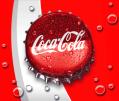Humans invent simplest but highly important things by mistake
Owner of Standard Food Markets in Oklahoma City Sylvan Goldman invented the first shopping cart in 1936 as he saw that clients were reluctant to buy bulky heavy goods at his store
Lots of things we use every day appeared as a result of mistakes. The discovery of America by Christopher Columbus is believed to be the most famous mistake ever made. American researcher Charlotte Foltz Jones published her book "Mistakes That Worked: 40 Familiar Inventions and How They Came to Be." She described those mistakes that turned out to be important for people's life.
In 1886, doctor and pharmacist John Pemberton was making a mixture of leaves of the South American plant coca and African nuts cola known by their tonic qualities. Pemberton tasted the mixture he prepared and liked its taste. The pharmacist believed the syrup he made could help relieve stress, weariness and toothache. Doctor Pemberton took the mixture to Atlanta's biggest drugstore where the first portions were sold at the price of five cents per a glass the same day. But the world-wide known drink that we know today appeared through negligence. A seller incidentally opened a wrong tap and diluted the syrup with soda water instead of ordinary fresh water. That is how Coca-Cola was born. At first, the fizzy drink coca-cola was not really popular. Within the first year after the coca-cola production was launched, Pemberton spent $79.96 on advertising of the new drink but the sum he gained from selling it made up just $50. Today, Coca-Cola is produced and consumed in 200 countries of the world.
Doctor Pemberton took the mixture to Atlanta's biggest drugstore where the first portions were sold at the price of five cents per a glass the same day. But the world-wide known drink that we know today appeared through negligence. A seller incidentally opened a wrong tap and diluted the syrup with soda water instead of ordinary fresh water. That is how Coca-Cola was born. At first, the fizzy drink coca-cola was not really popular. Within the first year after the coca-cola production was launched, Pemberton spent $79.96 on advertising of the new drink but the sum he gained from selling it made up just $50. Today, Coca-Cola is produced and consumed in 200 countries of the world.
 Chocolate chip cookies are very popular in the US. They appeared first in the 1930s when an inn owner Ruth Wakefield from Massachusetts decided to cut up chunks of a chocolate bar and added it to rich butter cookie dough. The woman expected the chocolate would melt and give the brown color and chocolate taste to biscuits. Ruth Wakefield was ignorant of the physics laws and could not suppose the chocolate would not melt at all. So, the woman invented a new sort of cakes with chunks of chocolate inside that got incredibly popular.
Chocolate chip cookies are very popular in the US. They appeared first in the 1930s when an inn owner Ruth Wakefield from Massachusetts decided to cut up chunks of a chocolate bar and added it to rich butter cookie dough. The woman expected the chocolate would melt and give the brown color and chocolate taste to biscuits. Ruth Wakefield was ignorant of the physics laws and could not suppose the chocolate would not melt at all. So, the woman invented a new sort of cakes with chunks of chocolate inside that got incredibly popular.
Post-it Notes appeared as a result of an unlucky experiment when Spencer Silver from 3M attempted to make the commonplace adhesive tape even stickier in 1968. During the experiment the researcher got thick  substance that did not sink into surfaces meant for adhesion and thus could not be used in the adhesive tape production. The find was pretty much forgotten until Spencer's colleague suddenly remembered the not-so-sticky substance. The man sang in a church choir when he had spare time. He was irritated when bookmarks in his hymnal slipped out and made it a problem to access various hymns. He managed to solve his problem with the help of the sticky substance invented by his colleague before: the substance helped stick bookmarks in the hymnal without spoiling the pages. Post-it Notes were first put on the market in 1980.
substance that did not sink into surfaces meant for adhesion and thus could not be used in the adhesive tape production. The find was pretty much forgotten until Spencer's colleague suddenly remembered the not-so-sticky substance. The man sang in a church choir when he had spare time. He was irritated when bookmarks in his hymnal slipped out and made it a problem to access various hymns. He managed to solve his problem with the help of the sticky substance invented by his colleague before: the substance helped stick bookmarks in the hymnal without spoiling the pages. Post-it Notes were first put on the market in 1980.
 In 1844, inventor Charles Goodyear quite accidentally discovered the vulcanization of rubber that kept rubber away from softening in hot weather and from fragility in cold weather. For many years before that, Charles Goodyear had been making experiments to improve the quality of rubber but of no avail. Once he warmed the mixture of India rubber and sulfur on the gas-stove. The vulcanization discovery became a real spur for the electrical industry development where rubber is used as a wonderful dielectric. It is thanks to Goodyear that we can enjoy driving modern cars.
In 1844, inventor Charles Goodyear quite accidentally discovered the vulcanization of rubber that kept rubber away from softening in hot weather and from fragility in cold weather. For many years before that, Charles Goodyear had been making experiments to improve the quality of rubber but of no avail. Once he warmed the mixture of India rubber and sulfur on the gas-stove. The vulcanization discovery became a real spur for the electrical industry development where rubber is used as a wonderful dielectric. It is thanks to Goodyear that we can enjoy driving modern cars.
Another invention that appeared as a mistake was the heart pacemaker. In 1941, the Navy charged electrical engineer John Hopps withhypothermia researches. Hewas seeking a better method for quick warming of a man after his long stay in cold water or outside in cold weather.  Hopps used high-frequency radio-wave radiation for warming people exposed to low temperatures and suddenly noticed that electric impulses could make the heart start beating again when it stopped as a result of supercooling. In 1950, the first heart pacemaker was made on the basis of Hopps' discovery. But the device turned out to be too big and inconvenient, and it also burnt the skin of patients sometimes. Doctor Wilson Greatbatch made another accidental discovery that helped improve the heart pacemaker invented by Hopps. The doctor worked on making a device for recording the cardiac rate. Once, he by mistake inserted a wrong resistor into the device and registered oscillation in the current line that resembled the human cardiac rate. In two years, Wilson Greatbatch created the first implantable heart pacemaker producing artificial impulses to stimulate the heart.
Hopps used high-frequency radio-wave radiation for warming people exposed to low temperatures and suddenly noticed that electric impulses could make the heart start beating again when it stopped as a result of supercooling. In 1950, the first heart pacemaker was made on the basis of Hopps' discovery. But the device turned out to be too big and inconvenient, and it also burnt the skin of patients sometimes. Doctor Wilson Greatbatch made another accidental discovery that helped improve the heart pacemaker invented by Hopps. The doctor worked on making a device for recording the cardiac rate. Once, he by mistake inserted a wrong resistor into the device and registered oscillation in the current line that resembled the human cardiac rate. In two years, Wilson Greatbatch created the first implantable heart pacemaker producing artificial impulses to stimulate the heart.
 Today, modern medicine widely uses antibiotics. Fifteen percent of medicines sold worldwide are antibiotics. Antibiotics appeared thanks to researches of Alexander Fleming. In 1928, the researcher noticed that the mycelial fungus penicillin infected one of his staphylococcus samples left near an open window. Fleming studied the sample and saw that penicillin was destroying the bacteria. The importance of Fleming's discovery became evident in 1940 when first researches of antibiotic medicines were started worldwide.
Today, modern medicine widely uses antibiotics. Fifteen percent of medicines sold worldwide are antibiotics. Antibiotics appeared thanks to researches of Alexander Fleming. In 1928, the researcher noticed that the mycelial fungus penicillin infected one of his staphylococcus samples left near an open window. Fleming studied the sample and saw that penicillin was destroying the bacteria. The importance of Fleming's discovery became evident in 1940 when first researches of antibiotic medicines were started worldwide.
 Owner of Standard Food Markets in Oklahoma City Sylvan Goldman invented the first shopping cart in 1936 as he saw that clients were reluctant to buy bulky heavy goods at his store. Once, Goldman saw a client putting her heavy bag with groceries on a toy machine that her son was pulling on a string. It occured to the sman to fix small wheels to an ordinary shopping basket. Later, Sylvan Goldman created the prototype of a modern shopping cart with the help of mechanical engineers. Extensive manufacturing of shopping carts was started in 1947.
Owner of Standard Food Markets in Oklahoma City Sylvan Goldman invented the first shopping cart in 1936 as he saw that clients were reluctant to buy bulky heavy goods at his store. Once, Goldman saw a client putting her heavy bag with groceries on a toy machine that her son was pulling on a string. It occured to the sman to fix small wheels to an ordinary shopping basket. Later, Sylvan Goldman created the prototype of a modern shopping cart with the help of mechanical engineers. Extensive manufacturing of shopping carts was started in 1947.
Canadian inventor Harry Wasylyk from Winnipeg invented the first garbage bag in 1950. The municipal authorities asked the engineer if he could make something to stop garbage from falling out when collected with garbage collecting machines. At first, Wasylyk wanted to  design some sort of a vacuum cleaner to collect the garbage that still fell out of garbage collecting machines. But suddenly he heard some of his acquaintances saying he needed a bag for garbage. It immediately occurred to the engineer that garbage must be first packed into polyethylene bags for effective and clean operations of garbage collecting machines. The Winnipeg hospital was the first to use such polyethylene garbage bags. First garbage bags meant for usage at homes appeared in the 1960s. Today, humanity is focused on effective garbage utilization, a more serious problem than just clean collection of domestic garbage.
design some sort of a vacuum cleaner to collect the garbage that still fell out of garbage collecting machines. But suddenly he heard some of his acquaintances saying he needed a bag for garbage. It immediately occurred to the engineer that garbage must be first packed into polyethylene bags for effective and clean operations of garbage collecting machines. The Winnipeg hospital was the first to use such polyethylene garbage bags. First garbage bags meant for usage at homes appeared in the 1960s. Today, humanity is focused on effective garbage utilization, a more serious problem than just clean collection of domestic garbage.
Famous researcher Percy Spencer working at one of the largest defense industrial  complex enterprises Raytheon and holding over 120 patents for inventions was the creator of a microwave oven. Shortly before the end of WWII in 1945, the researcher was working on improving radar effectiveness. When Spencer walked in front of a working radiator he found out that a chocolate bar in his pocket got melted. After more experiments, the researcher made the first microwave oven that weighed about 400 kg and could be used in restaurants, airplanes and ships for fast warming of food.
complex enterprises Raytheon and holding over 120 patents for inventions was the creator of a microwave oven. Shortly before the end of WWII in 1945, the researcher was working on improving radar effectiveness. When Spencer walked in front of a working radiator he found out that a chocolate bar in his pocket got melted. After more experiments, the researcher made the first microwave oven that weighed about 400 kg and could be used in restaurants, airplanes and ships for fast warming of food.
Discuss this article on Pravda.Ru English Forum
Subscribe to Pravda.Ru Telegram channel, Facebook, RSS!




